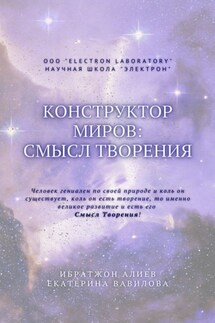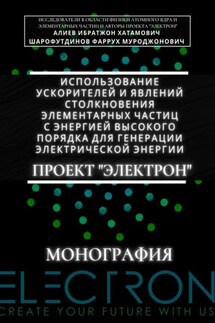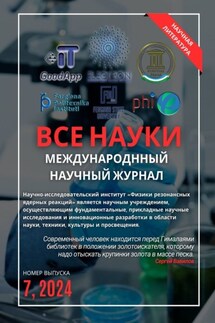Все науки. №10, 2024. Международный научный журнал - страница 7
Abstract. MARS (Modular Apparatus for nuclear Reactions Spectroscopy) consists of a compact, portable and, therefore, versatile spectrometer for measuring nuclear reactions and carrying out energy spectroscopy. MARS, as a system, is com posed by 3 sub-systems: detection, electronic, and data acquisition. The de tection sub-system is based on 16 silicon (Si) SBD (Surface Barrier Detectors) from ORTEC, being 8 detectors 15 µm thick and 8 detectors 500 µm thick (nominal values). Thus, MARS allows for coupling 8 Si telescopes. Detectors are connected to an electronic system based exclusively on desktop and VME modules from CAEN (Costruzioni Apparecchiature Elettroniche Nucleari) SpA company. A PC handles the data acquisition by means of CoMPASS (CAEN Multi-PArameter Spectroscopy Software). It manages parameters, builds plots, and saves the relevant energy and time spectra. MARS has been developed in collaboration with CAEN SpA (electronics developer and manufacturer) and ATI Sistemas SL (CAEN SpA commercial representative in Spain). The multi channel feature of MARS allows for measuring angular and energy distributions of charged particles outgoing from a nuclear reaction. This work aims to present MARS as a spectrometer and its characterization. It includes a measurement of the 6Li+12C nuclear reaction, carried out at the 3MV tandem of the CNA (National Accelerator Centre), in Seville, Spain.
Keywords: Nuclear instrumentation, Spectrometer, Digitizers, Silicon detectors, 6Li +12C, Transfer reactions
Introduction
In the XXIcentury radiation detection and measurement evolution is strongly linked to two main features: i) the increasing use of digital techniques in process ing pulses from detectors and ii) the increasing trend of digitizing pulses closer to radiation detectors. As a consequence, the basic components in a typical pulse processing electronic chain are in continuous development [1, 2].
An incident radiation quantum interacts within the detector and deposits energy, that commonly produces free charges and a consequent current pulse. The integrated charge tends to be proportional to the energy deposited by the incident quantum. The preamplifier, commonly with a charge sensitive config uration, converts the current pulse into a voltage one, whose height is propor tional to the integrated charge. The preamplifier is also responsible for coupling impedance and constitutes an interface between the detector and the processing electronic. Recording the pulse height distribution is the basis to study the energy distribution of the incident radiation, allowing for energy spectroscopy [1, 2]. Traditional digital technologies, for instance, 8—10 bits ADCs (Analog-to Digital Converters), benefit from shaping amplifiers, that convert the pream plifier output voltage pulse into an ideally Gaussian shape, suitable for mea surements, in between preamplification and digitalization processes [1]. New digital technologies (for instance, 12—16 bits digitizers) [3, 4, 5, 6, 7, 8, 9] al low for pulse processing directly from the preamplifier (or even from detector, depending on the detector and the application), sampling a preamplified pulse with high digital resolution. The preamplifiers are characterized by a shaping time constant related to the duration of the pulse at its output. Shaped pulses are commonly sent to circuits that select them for further processing. For instance, an integral discriminator selects pulse height (and therefore energy) above a certain threshold; a differen tial discriminator or SCA (Single Channel Analyzer), selects pulse amplitudes between an upper and a lower threshold [1, 2]. The MCA (Multi Channel An alyzer) measures the pulse height for each selected event, assigning the pulse height to one of the acquisition bins or channels. It increments a memory register for the appropriate bin/channel. The final statistical result is a histogram con taining the number of pulses (events) within each of its amplitude (bin/channel). The resulting histogram or pulse height spectrum consists of digital values that can be displayed and stored for further processing and analysis. Pulse height spectrum represents the main tool for carrying out spectroscopy [2]. There have been 3 major data acquisition standards used in nuclear and par ticle Physics. NIM (Nuclear Instrumentation Module) is used to power supply the electronics [1, 10]. NIM modules cannot communicate through the crate backplane. This is a feature of later standards CAMAC and VME. As a conse quence, NIM-based ADC modules are nowadays uncommon. NIM is still widely used for amplifiers, discriminators, and other logic modules that do not require digital data communication [1]. CAMAC (Computer-Aided Measurement And Control) went further and consists of a standard bus and modular-crate elec tronics for data acquisition and control. The bus allows data transfer, through the crate backplane, between plug-in modules and a crate controller interfaces to a PC. The current standard is VME (VERSA Module Eurocard), expanded from CAMAC by providing more options and a faster bus speed [1]. VME bus was originally developed as a computer bus and has since been adapted for its use in nuclear and particle physics applications.









